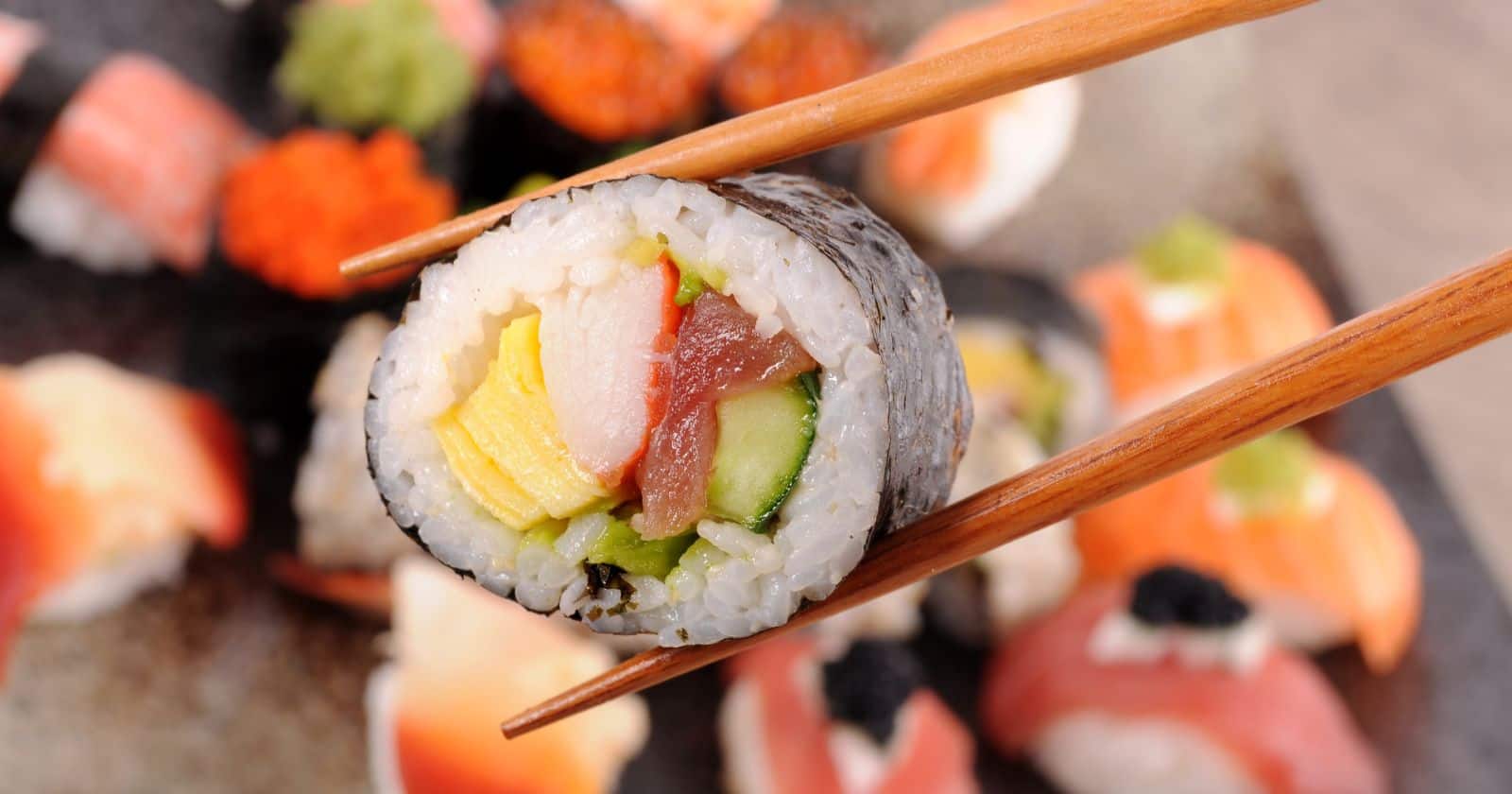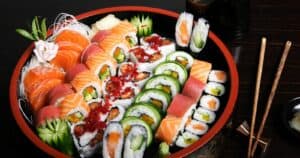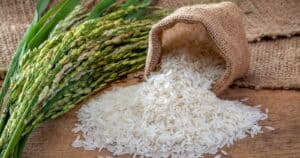Have you ever wondered what ingredients make up those delectable sushi rolls? As a popular Japanese dish, sushi is made from a variety of components that work together to create a delicious bite. Don’t let the raw fish scare you off – the combination of savory, sweet, and nutty flavors in sushi will leave your taste buds wanting more. Let’s break down the key ingredients that go into sushi rolls and unpack why this food has become a global sensation.
Rice is the foundation of sushi, providing the base and structure. sushi rice has a sticky texture thanks to being cooked with rice vinegar, sugar, and salt. This allows the rice to hold its shape when pressed tightly together. Nori seaweed is the paper that wraps many sushi rolls. The dark green sheets provide a salty, umami depth of flavor. Fillings like avocado, cucumber, crab, salmon, shrimp, and tamagoyaki (sweet omelet) are layered on top of the rice and wrapped in nori. Soy sauce, wasabi, and pickled ginger add seasoning,
While raw fish is the star of nigiri and sashimi, vegetarian sushi offers up just as much deliciousness. No matter your diet, sushi offers lean protein, omega-3s, and antioxidants. The balance of textures and flavors is what makes sushi so craveable. Now that you know what goes into it, go out and give this Japanese staple a taste!
The Foundation: Sushi Rice
Rice is the base of sushi. But it’s not just any rice – sushi rice is a short-grain, starchy white rice that becomes pleasantly sticky when cooked. The secret to great sushi rice lies in seasoning it with a mixture of rice vinegar, sugar, and salt as it cooks. This gives the rice a subtle sweet and sour flavor and allows it to hold together when pressed.
Properly cooked sushi rice has a glossy sheen and sticks together without being gummy. Premium Koshihikari rice grown in Japan is highly valued for making sushi, but calrose and arborio rice work too. The rice may seem bland on its own, but it provides the perfect neutral canvas for the sushi toppings.
The Wrapper: Nori Seaweed
While nigiri sushi is shaped by hand, many sushi rolls contain nori seaweed wrappers. These paper-thin sheets are made from purplered algae that has been dried and roasted. Nori adds a pleasant salty, umami flavor and striking dark green appearance to sushi rolls.
When wrapped around rice and fillings, nori’s flavor really shines. The sheets also hold the ingredients together in a neat package that’s easy to pick up with chopsticks. Look for nori with no holes or tears to avoid fillings falling out.
The Fillings: Fish, Meat & Veggies Galore
Here’s where sushi gets creative! Fillings can include raw or cooked seafood, marinated meats, and crisp vegetables.
Raw fish is traditional in high-end sushi. Popular choices are:
- Tuna – prized for its buttery texture and rich flavor
- Salmon – tender, pink slices with a mild taste
- Yellowtail – firm with a bold, slightly smoky flavor
- Squid – chewy texture and mild sweetness
Cooked seafood fillings add variety:
- Shrimp – plump and sweet
- Crab – indulgent chunks of real or imitation crabstick
- Octopus – tender with a faint brininess
Vegetable slices like cucumber and avocado make refreshing additions. Tamago (sweet rolled omelet) is a comforting filler. And don’t forget western twists like tuna salad or spicy crab mixes too!
The key is balancing flavors, textures, and colors in the fillings. A little goes a long way atop the small rice base.
Flavor Boosters: Condiments & Seasonings
A variety of condiments can take sushi to the next level:
- Soy sauce – the salty, umami-rich glaze and marinade
- Wasabi – Japanese horseradish with heat that makes your nose tingle
- Pickled ginger – slices with a tart, sweet and sour crunch
- Sriracha – the iconic garlic-chili sauce
- Ponzu – citrusy with soy sauce and rice vinegar
- Mayonnaise – creaminess to balance fish fattiness
Plus, seasoning in the rice itself like sesame oil, rice vinegar, and sake amp up the flavor.
Some unconventional ingredients can also make appearances in creative sushi rolls:
- Kombu (kelp) – umami flavor booster
- Shiso leaves – fresh herbal flavor
- Daikon radish – crisp peppery bite
- Carrots – sweet crunch and color
Don’t be afraid to try inventive ingredients – exploration is part of sushi’s appeal!
Health Benefits of Sushi Ingredients
While the refined carbs and sodium levels are drawbacks, sushi can also offer surprising health perks when made thoughtfully.
- Omega-3’s – from fish like salmon and tuna
- Protein – in fish, shrimp, eggs
- Vitamin C – from raw vegetables
- Fiber – from whole grains, seaweed
- Antioxidants – in wasabi, ginger, carrots
Balance is key – sushi can fit into a healthy diet when enjoyed in moderation as part of an overall varied meal plan.
Tips for Making Great Sushi at Home
Want to try making your own sushi? Follow these tips for success:
- Use high-quality sushi rice and prepare it with care – this is sushi’s essence.
- Source the freshest, responsibly-caught fish possible for raw preparations.
- Stick with classic tried-and-true fillings until you find your creative flair.
- Sharpen your knife to cut fillings into thin, uniform slices.
- Work quickly and neatly to prevent rice from drying out before rolling.
- Wet knife blade periodically to reduce sticking when cutting rolls.
- Don’t overstuff rolls – a modest amount of filling goes a long way.
- Chill completed sushi before serving for easiest slicing.
It takes practice, but making your own sushi is very rewarding! Start with simple rolls and work your way up as your skills improve.
In Conclusion
While sushi may seem mysterious, it’s simply the artful combination of rice, seaweed, fish, and vegetables. Master chefs carefully select and prepare ingredients to achieve the perfect balance of flavors, textures, and aesthetics. Now that you know the components, you can order and appreciate sushi with a deeper understanding of this iconic Japanese delicacy.





